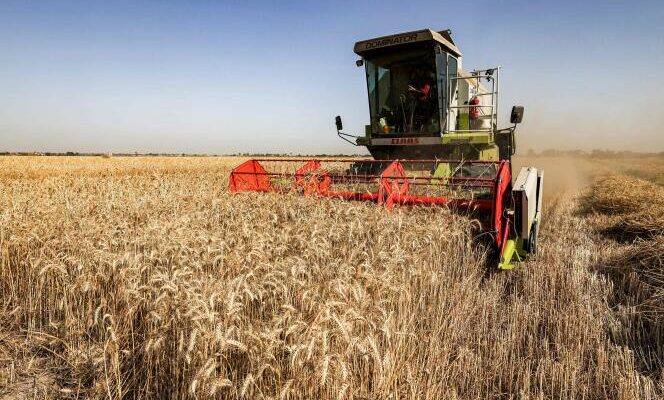VSOop of warning about the seedlings. Since the fall of 2023, grain growers have been disoriented. The rains which fell continuously disrupted the calendars. Difficult to sow wheat when the tractors are stuck in the mud. At the time of the first estimates, the Ministry of Agriculture can only note this. The size of the fields has shrunk with the effect of rainwater. The areas sown with wheat would be down 7.7% this year, to 4.3 million hectares, compared to 2023.
As for the state of crops, it is affected by humidity. Mushrooms are legion. And some plots were even hailed. The wheat fields are turned upside down. “There are terrible gaps. Depending on the rainfall and the soil, there can be catastrophic areas and very good areas, sometimes in the same plot,” explains Benoît Piétrement, president of the council specializing in large crops at FranceAgriMer and cereal grower in Marne.
“It will be difficult to pass the 30 million tonnes of wheat production mark in France this year”, predicts Arthur Portier, analyst at Argus Media France (formerly Agritel). Even if, in May, as everyone in agriculture knows, the game is not over.
A step back to put into perspective
Cereal growers have, between two field inspections and three sowing attempts, their eyes glued to the markets. On this side, they have reason to hope. The price of wheat appears to have bottomed out and started to rise. On Euronext, the price of a tonne of soft wheat, due in September, which had fallen below 200 euros at the beginning of March, is now trading at more than 245 euros. A rebound of the straw cereal bale of almost 20%.
“The marked increase in prices is fueled by weather data”, underlines Mr. Portier. The European situation is being closely scrutinized, but now, on the wheat markets, it is Russia, which has become the world’s leading exporter, which calls the shots. However, while at the end of winter the fortunes seemed favorable to Russian cereal growers, with forecasts for a record harvest of more than 94 million tonnes, the tide seems to have turned a little.
A water deficit would affect the south of the country, and a freezing wave hit at the beginning of May. As a result, the harvest could weigh less than 90 million tonnes. A setback to put into perspective, according to Mr. Portier. He recalls that Russia has only passed the 80 million tonne mark four times. It prevents. Even if the world’s granaries are still full, a drop in the number of ears in Russia is enough to give food for thought to investors and betting enthusiasts.
